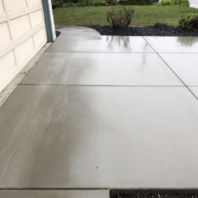What You Should Know About Concrete Installation
ericwilliamz1090 October 4, 2021Since cement systems are regarded for his or her toughness; they regularly obtain quite a few abuses from automobiles and foot traffic.
Therefore, get cement this is air-entrained, because of this that it includes air bubbles with the intention to settlement and enlarge a good way to soak up surprise and adapt to excessive climate changes.
Also, you’ll in all likelihood need to boost the paperwork with metallic rebar grids a good way to grow the electricity of the sub-structure.
These steel bars are suspended above the soil so the cement may be poured above and under the grid itself.
What is Concrete Installation?
Concrete is a combination such as sand, gravel, and Portland cement powder (this powder, as soon as moist, becomes a glue that holds all of it together).
It’s vital to have a cement transport corporation put together the combination so that once it arrives it’s far the right thickness: sufficient water ought to be delivered to the combination so that it pours without difficulty without being too moist.
Laying concrete is a grueling job. It’s heavy, messy, and may begin drying fast, so make certain you’re making an area to be had for a truck to park this is closest to the webpage as possible.
You can hire the concrete installation Charlotte services provider to install concrete with the team of expertise.
To get the reliable and experienced concrete installation services in the city, visit https://concretecontractorcharlotte.com/concrete-installation.
This will help you in completing the process of concrete installation with professionals.
If it’s a driveway or sidewalk, it could be capable of being poured at once into the paperwork without hauling, however, if it’s a lower back patio, it ought to be carried through wheelbarrows.
So attempt putting in concrete on a cooler, cloudier day: now no longer best does it make the paintings much less strenuous, it additionally prevents the cement from drying too fast.
The Process of Concrete Finishing
After laying concrete, it’ll want to be leveled. A board is dragged throughout the pinnacle to make it despite the paperwork.
Then it’s smoothed with a wooden float: now no longer best does this enhance its appearance, it additionally makes it more potent through using the bigger stones into the cement even as bringing the finer particles (sand and grit) to the pinnacle.
Then the cement is separated from the shape and joints are created: cement shrinks because it hardens, so joints save you from it cracking.
At this point, you can broom the floor to create an ornamental brushed texture. Lastly, it ought to be left on my own to dry.
However, cement doesn’t simply dry—it cures. The slower it cures, the more potent the effects.
So as soon as the contractors leave, you’ll want to moist down the floor for some days and usually cowl it with wet burlap or a tarp to sluggish the process.
You can also observe an end that’ll seal in moisture.
Also, to know the amazing facts about concrete driveways, just click here.
What you want to recognize approximately is concrete durability?
Corrosion of metals, freeze-thaw cycles, chemical assaults, and alkali-mixture response are all reasons for concrete to become worse.
The important offender is the publicity to moisture. It is generally incorrect that concrete is impermeable however in reality, liquid can nevertheless skip through.
A correct best and efficaciously consolidated four inches or greater concrete slab is impermeable to the passage of water from the ground.
However, it isn’t impermeable to the sluggish passage of water vapor.
The key to heading off concrete to become worse is to make the concrete much less permeable.
This may be done by reducing water to cement ratio, uniform mixture gradation, and density and observe admixtures (superplasticizer or silica fume) and vapor retarder.
By decreasing the concrete’s permeability and ok air void system, it’ll grow the concrete’s durability.
As well, lifting of slab edges on the joints and cracks arise due to shrinkage.
When the pinnacle and backside of the slab have distinctive moisture stage and temperature variance, it affects more shrinkage at the pinnacle floor consequently developing the curling of slabs.



